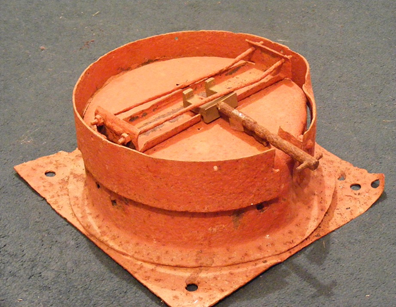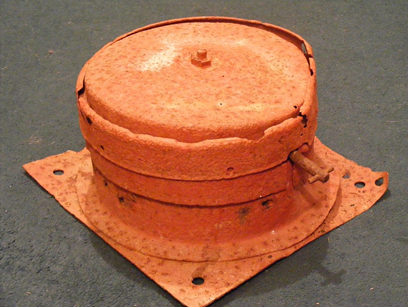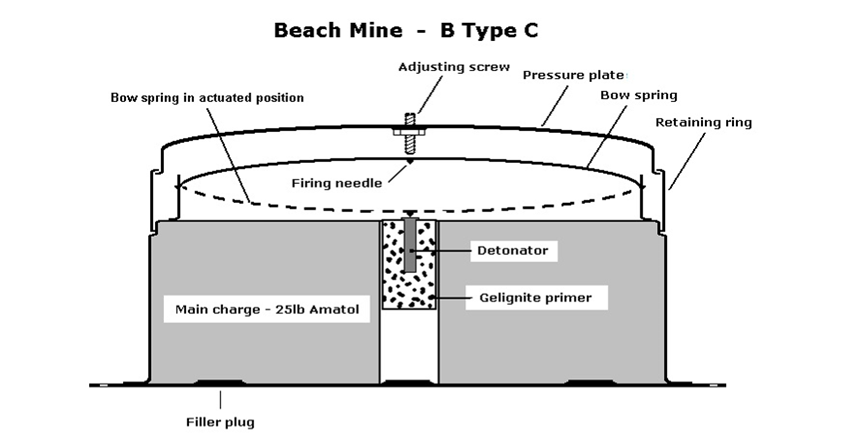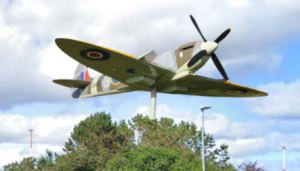Site 9. Sinclair’s Bay Minefield
In 1940 as part of the anti-invasion defences around Sinclair’s Bay, an extensive minefield was laid along the length of the bay just behind the beach. The size of the minefield depended on the area to be protected and at that time a beach minefield averaged around 175 mines. However, such was the concern of Caithness being invaded that over 3000 mines were laid on this beach. At the time it was said to be the largest minefield in Britain.
The majority of the mines laid were Type C Beach Mines, which were particularly nasty. They were filled with 25 lbs (11kg) of high explosive which was intended to blow the track off a tank, or the bow out of a landing craft. They could also be triggered by someone standing on them and anyone doing so had no chance of survival. Additional anti-tank mines were also laid around the mouth of Wester River as this was considered the most likely place for tanks to be landed.


The mines were laid in a belt for 3½ miles (5.6km) from Keiss beach where the boulder-strewn foreshore gives way to sand, to just south of the modern golf clubhouse. The belt was about 50 feet (15m) wide with the mines arranged in three parallel rows 20 feet apart (6m). Each mine was buried about 20 feet (6m) from its neighbour and they were staggered so that they presented a front with about 7 feet (2m) between each mine. This was about the width of a German tank of the period. The anti-tank mines, being smaller, were placed closer together.

After the war, between 1945 and 1947, the minefield was cleared by a detachment of 50 officers and men of No. 10 Bomb Disposal Company, Royal Engineers. They were assisted by German prisoners of war from the nearby POW Camp 165 at Watten. The company was under the command of Major William Hewitt GM (George Medal) but the day to day clearance work was organised and overseen by Sergeant Major Ernest Shand. Ernest later made his home in Wick, where he passed away at the age of 100 in 2017.
Depending on the type of ground to be cleared the mines were detected using either a Mine Detector Mk 4A or a Mine Locator No.1 Mk 2. Often the long marram grass covering the dunes had to be burnt away with flame throwers before the detecting could be done. When a mine was found it was carefully uncovered, de-fuzed, then carried away to a designated area of the beach and blown up, four at a time.
Occasionally the mines were so deeply buried by the shifting sands that other methods had to be used to find them. A specially modified Bren gun Carrier with a high-pressure water jet and armour shielding to protect the operators was used to blast away the sand to expose the mines. Sometimes when the jet of water hit a buried mine the pressure caused the mine to detonate where it lay.

During the three years of this highly dangerous clearance work, all 3000 mines were located and destroyed. It is thanks to the dedicated and painstaking efforts of SM Ernest Shand and his men that Sinclair’s Bay can once more be enjoyed by everyone, safe in the knowledge that no deadly surprises are lurking beneath the sand.


